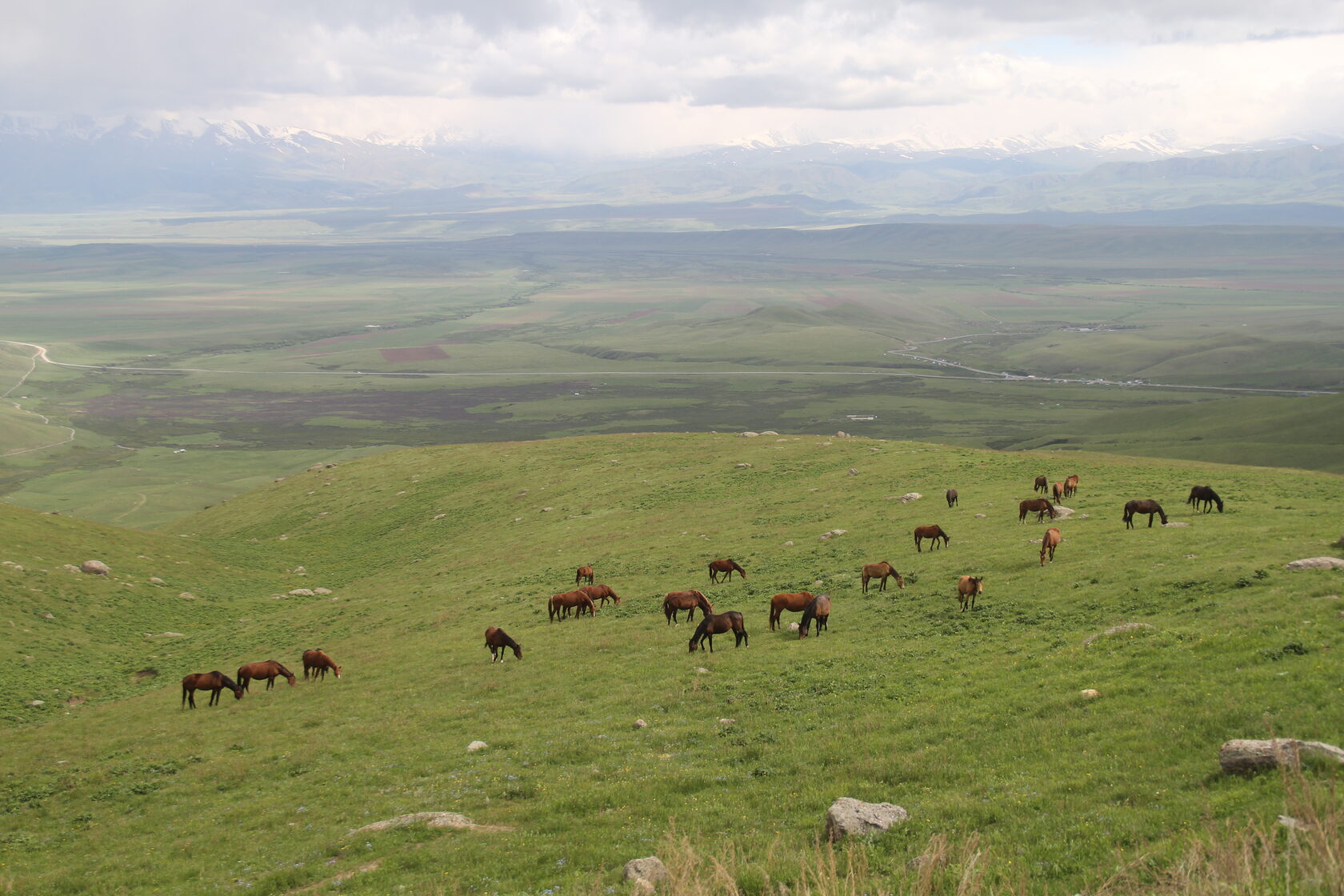Agriculture
Agriculture plays an important role in the country's economy. It accounts for 35.3% of GDP and employs 55% of the total labor force (based on 2007 data). Only about 7% of the country's total land area is used for crop production, with 85% of agricultural land used as pasture for grazing. Due to the geographical and topographical peculiarities of Kyrgyzstan's territory, livestock farming continues to be a significant part of the country's agriculture. 52% of the total labor force in the republic work in the agricultural sector, and agriculture accounts for 38.2% of GDP. More than two thirds of the total population of the country live in rural areas, where agriculture is the main source of household income; more than half of the rural population is below the poverty line. Agriculture was one of the first sectors to undergo reforms since the early nineties.
Land Reform
The implementation of the land reform program in the Kyrgyz Republic was the most important policy change to ensure food security and subsequently to ensure the growth of farm productivity. Privatization of land resources began in the mid-nineties with the transfer of land plots into long-term leases and then, in 1999, into full ownership. By 2002, the process of transforming state farms and agricultural cooperatives into peasant farms was mostly completed. Almost all arable land (except for 25% of the land remaining in the Agricultural Land Redistribution Fund (ALRF), which was state-owned and managed by local authorities) was transferred to private ownership.
Irrigation
Irrigation is essential for crop production, as more than two-thirds of arable land depends on irrigation systems. Significant donor-supported investment in the second half of the nineties has helped to rehabilitate some of the infrastructure that was wearing out and aging in the absence of proper maintenance.
Prices, Marketing, Trade and Taxes
Agricultural marketing and prices were liberalized in the early nineties, and budget subsidies were reduced over time. The main remaining divergences related to agricultural development policy have to do with taxation policy. Most farms are subject to small taxes. Unified land taxes were introduced in 1997 and have been revised annually since then. However, medium and large corporate agricultural associations and agro-processing companies are taxed on corporate income.
Rural Finance
Since 1997, a large number of non-bank financial institutions have emerged in the country. They provide most of the credit facilities to agricultural enterprises, and since the passage of the defining legislation in 1999 and 2002, their agricultural credit portfolios have continued to grow. Many of these non-bank financial institutions are role models for all countries in the region. They include the Kyrgyz Agricultural Finance Corporation (KAFC), which mainly lends to agricultural enterprises, but its ability to expand its scope depends on the ability to raise additional capital. The government has a constructive role to play in gradually improving the legal framework for private lending, including the Law on Pledge, which gives lenders greater incentives to accept movable and immovable property as collateral.
2006
Agriculture plays an important role in the country's economy. It accounts for 35.3% of GDP and employs 55% of the total labor force (based on 2007 data). Only about 7% of the country's total land area is used for crop production, with 85% of agricultural land used as pasture for grazing. Due to the geographical and topographical peculiarities of Kyrgyzstan's territory, livestock farming continues to be a significant part of the country's agriculture. 52% of the total labor force in the republic work in the agricultural sector, and agriculture accounts for 38.2% of GDP. More than two thirds of the total population of the country live in rural areas, where agriculture is the main source of household income; more than half of the rural population is below the poverty line. Agriculture was one of the first sectors to undergo reforms since the early nineties.
Land Reform
The implementation of the land reform program in the Kyrgyz Republic was the most important policy change to ensure food security and subsequently to ensure the growth of farm productivity. Privatization of land resources began in the mid-nineties with the transfer of land plots into long-term leases and then, in 1999, into full ownership. By 2002, the process of transforming state farms and agricultural cooperatives into peasant farms was mostly completed. Almost all arable land (except for 25% of the land remaining in the Agricultural Land Redistribution Fund (ALRF), which was state-owned and managed by local authorities) was transferred to private ownership.
Irrigation
Irrigation is essential for crop production, as more than two-thirds of arable land depends on irrigation systems. Significant donor-supported investment in the second half of the nineties has helped to rehabilitate some of the infrastructure that was wearing out and aging in the absence of proper maintenance.
Prices, Marketing, Trade and Taxes
Agricultural marketing and prices were liberalized in the early nineties, and budget subsidies were reduced over time. The main remaining divergences related to agricultural development policy have to do with taxation policy. Most farms are subject to small taxes. Unified land taxes were introduced in 1997 and have been revised annually since then. However, medium and large corporate agricultural associations and agro-processing companies are taxed on corporate income.
Rural Finance
Since 1997, a large number of non-bank financial institutions have emerged in the country. They provide most of the credit facilities to agricultural enterprises, and since the passage of the defining legislation in 1999 and 2002, their agricultural credit portfolios have continued to grow. Many of these non-bank financial institutions are role models for all countries in the region. They include the Kyrgyz Agricultural Finance Corporation (KAFC), which mainly lends to agricultural enterprises, but its ability to expand its scope depends on the ability to raise additional capital. The government has a constructive role to play in gradually improving the legal framework for private lending, including the Law on Pledge, which gives lenders greater incentives to accept movable and immovable property as collateral.
2006
